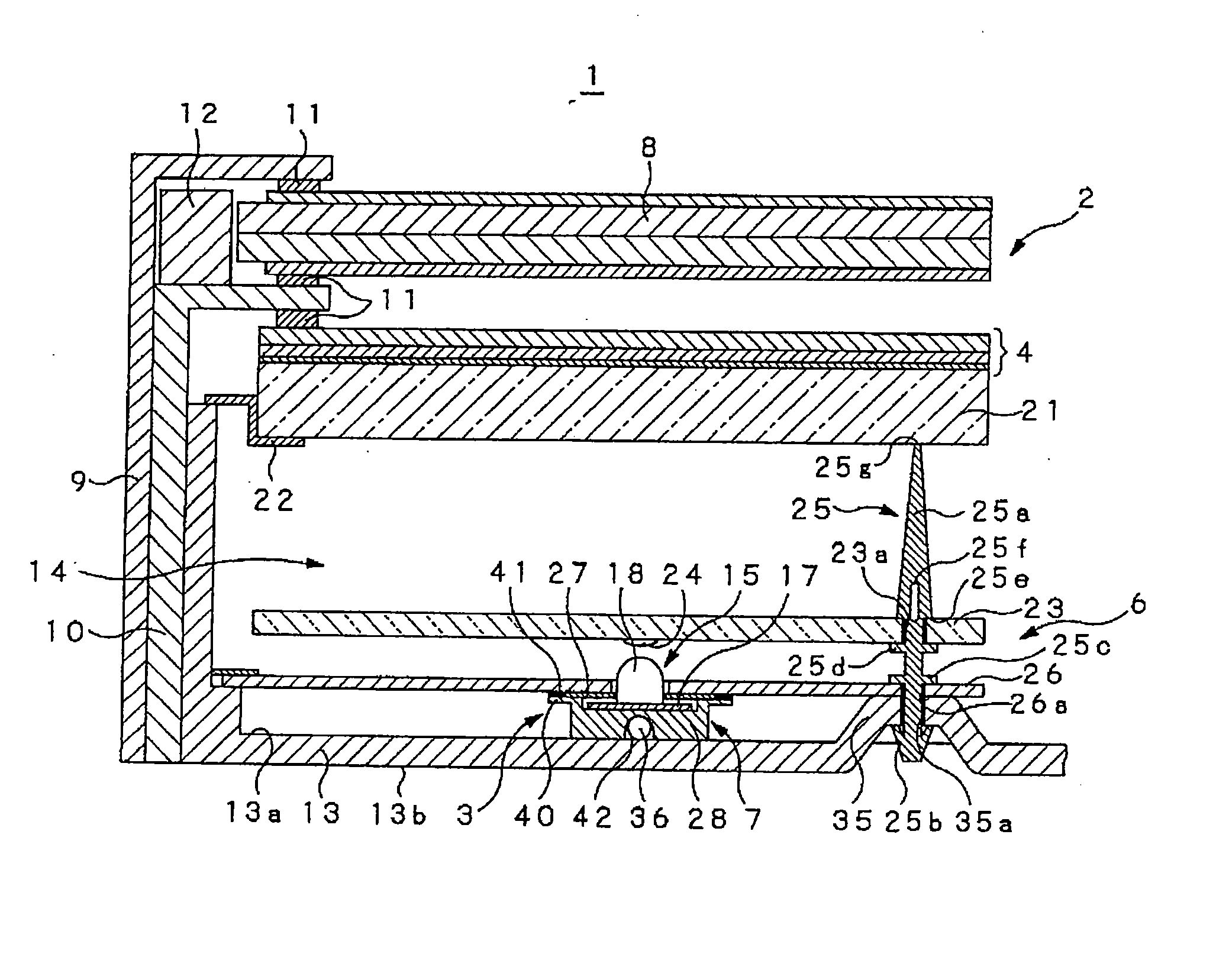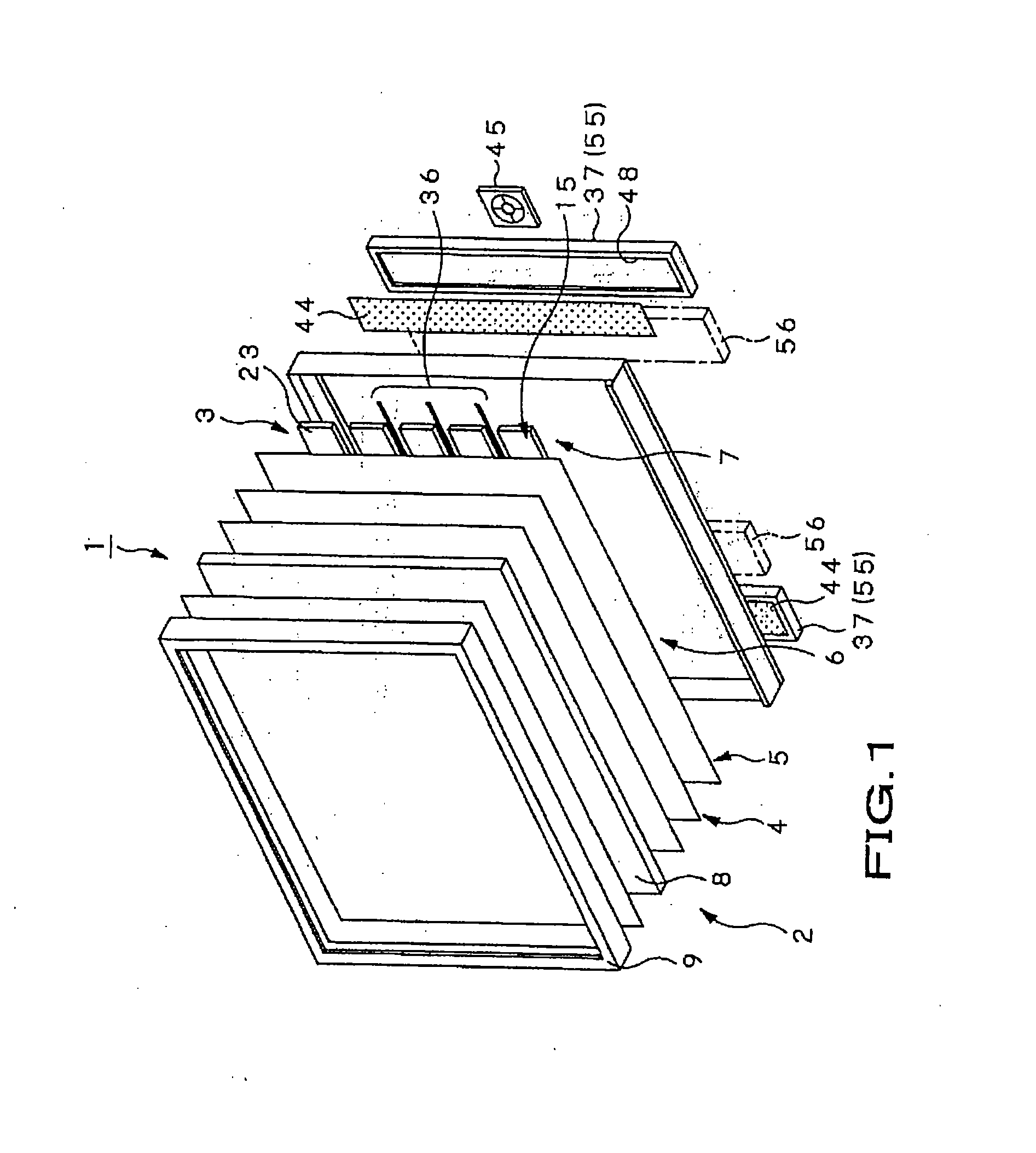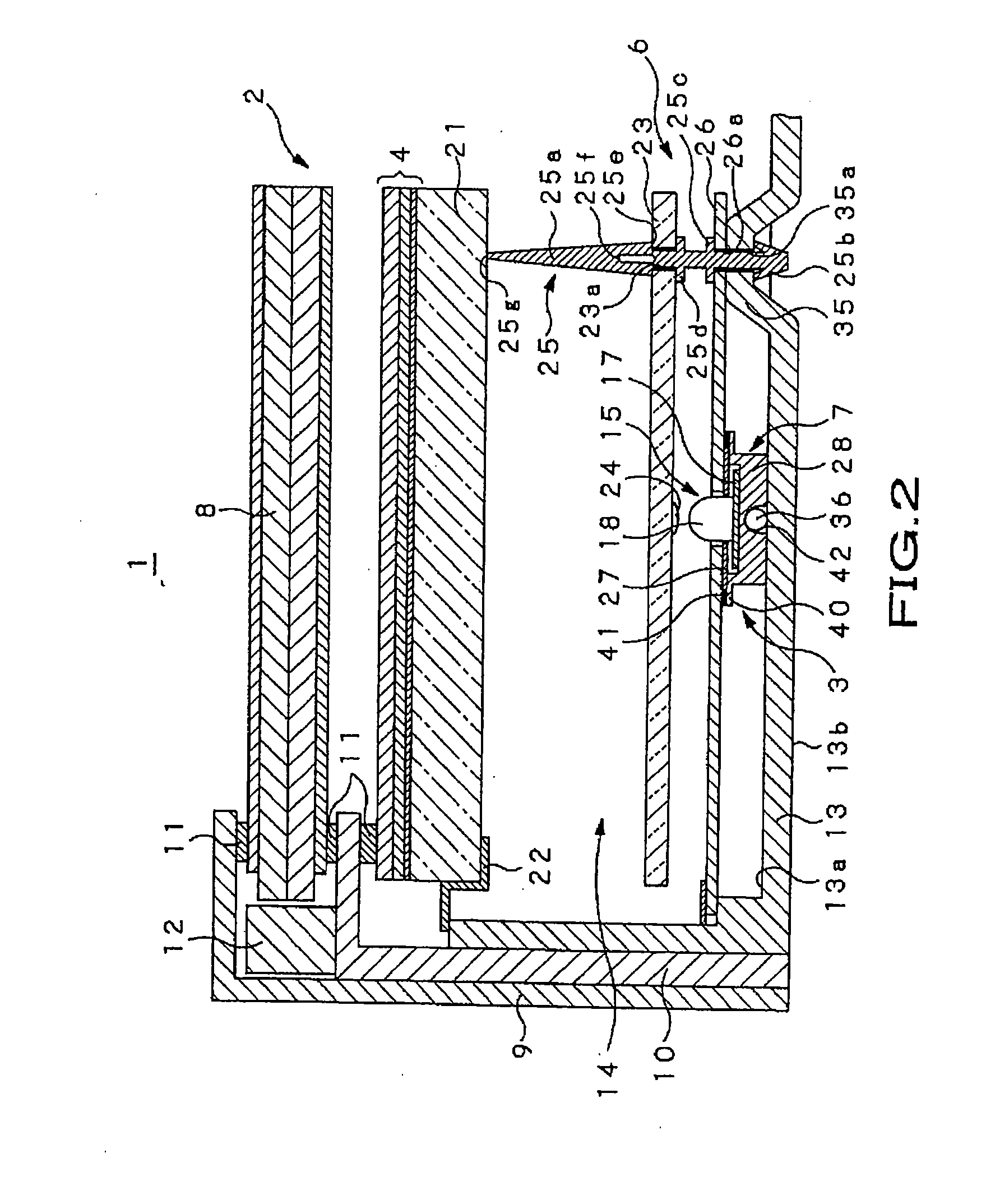Heat radiator and display unit
a technology of heat radiator and display unit, which is applied in the direction of lighting and heating apparatus, semiconductor devices for light sources, instruments, etc., can solve the problems of inability to meet the requirements of backlight unit, inability to provide satisfactory emission brightness, and relatively short life of cclf, so as to prevent color irregularities, enhance heat conductivity, and operate stably
- Summary
- Abstract
- Description
- Claims
- Application Information
AI Technical Summary
Benefits of technology
Problems solved by technology
Method used
Image
Examples
Embodiment Construction
[0037] An embodiment of a transmissive liquid crystal color display unit (hereinafter referred to as LCD unit) according to the present invention will be described below in detail with reference to the accompanying drawings.
[0038] A liquid crystal display unit 1 according to the embodiment is used for a television set having a large-sized screen of, e.g., 40 inches or more, a display monitor unit, or the like. As shown in FIGS. 1 and 2, the liquid crystal display unit 1 includes a liquid crystal panel unit 2 and a backlight 3 which is mounted to the back surface side of the liquid crystal panel unit 2 and emits a large amount of illumination light. Between the liquid crystal panel unit 2 and backlight 3, an optical conversion section 4, a light guide panel 5, a reflection section 6, and a heat radiation section 7 are disposed. The optical conversion section 4 applies predetermined optical conversion to illumination light emitted from the backlight 3 so as to allow the converted lig...
PUM
| Property | Measurement | Unit |
|---|---|---|
| size | aaaaa | aaaaa |
| reflectance | aaaaa | aaaaa |
| size | aaaaa | aaaaa |
Abstract
Description
Claims
Application Information
 Login to View More
Login to View More - R&D
- Intellectual Property
- Life Sciences
- Materials
- Tech Scout
- Unparalleled Data Quality
- Higher Quality Content
- 60% Fewer Hallucinations
Browse by: Latest US Patents, China's latest patents, Technical Efficacy Thesaurus, Application Domain, Technology Topic, Popular Technical Reports.
© 2025 PatSnap. All rights reserved.Legal|Privacy policy|Modern Slavery Act Transparency Statement|Sitemap|About US| Contact US: help@patsnap.com



